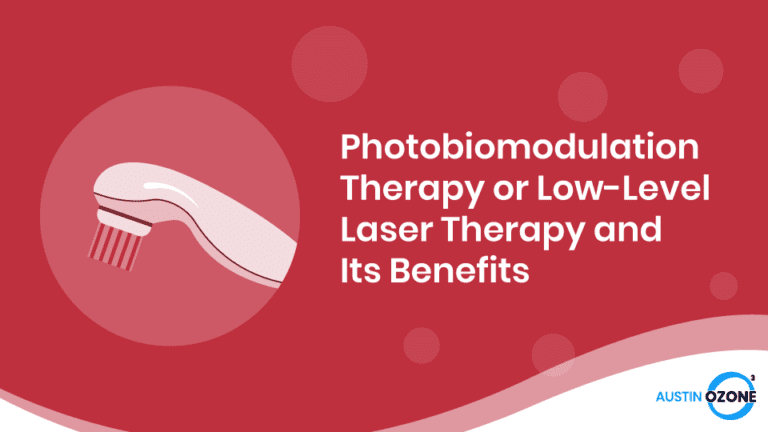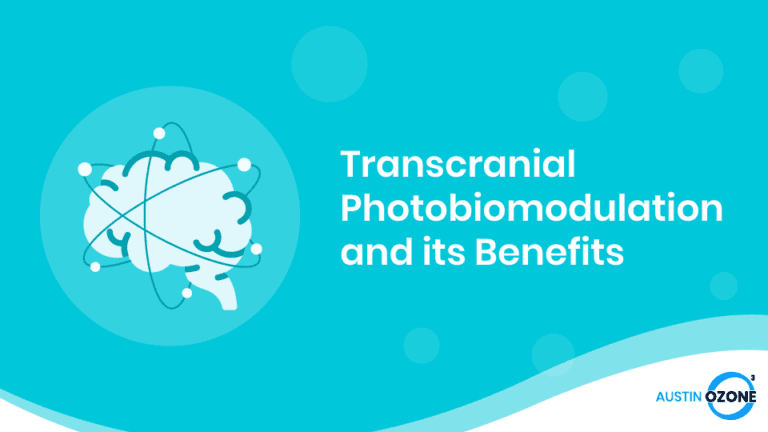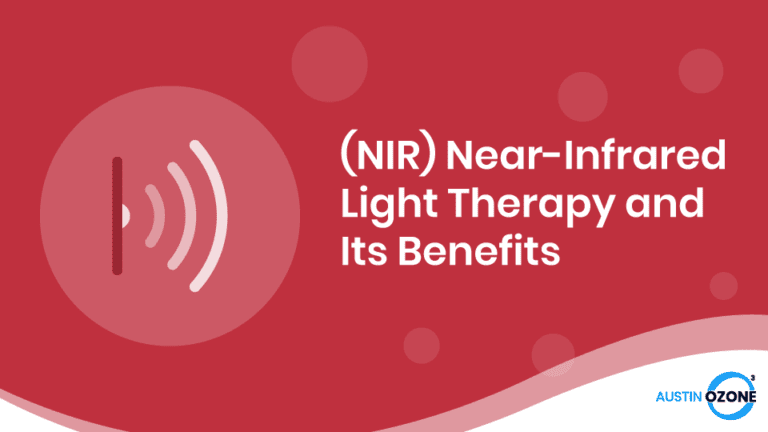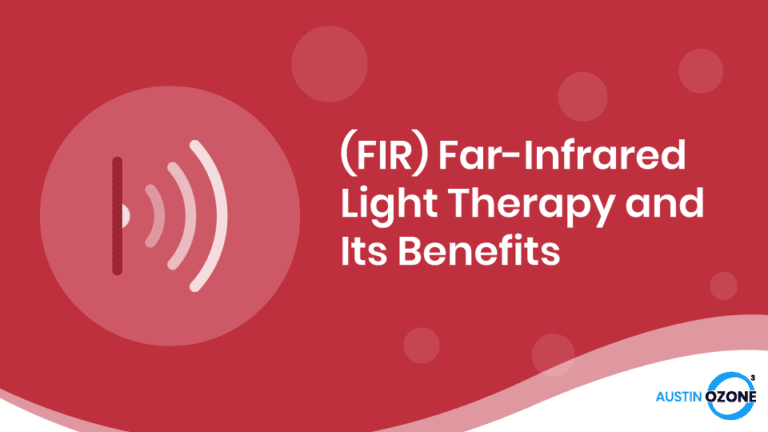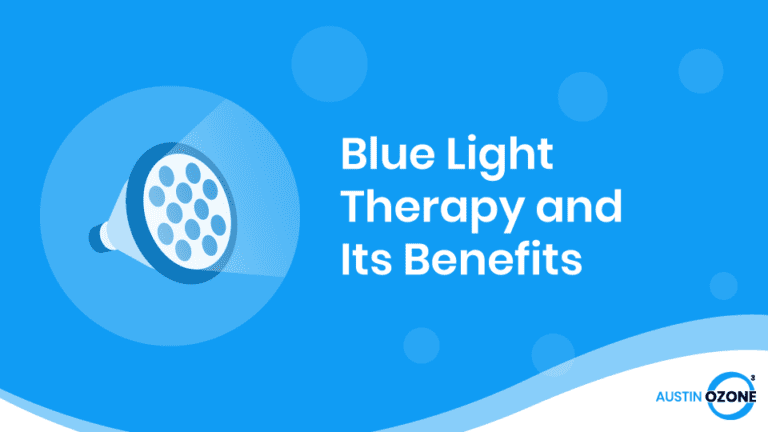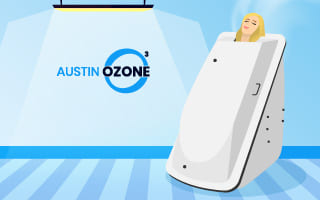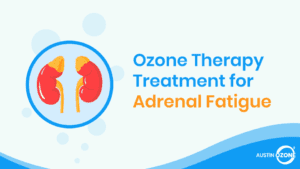Photobiomodulation therapy or PBM therapy is a good example of how an old technology like low-level laser therapy (LLLT) has evolved through the years. Since the early days, it has been consistently found that the use of monochromatic light can obtain beneficial biological effects and applications in medicine.
An Overview of Photobiomodulation Therapy
LLLT was first discovered in 1967 by Endre Mester at Semmelweis Medical University in Hungary. His experiment aimed to duplicate the ruby laser work of Paul McGuff on rats with malignant tumors.
However, Mester’s work22 was not as powerful as McGuff’s. Mester’s low-power laser beam did not cure any tumors, though he observed better wound healing in rats.
Since then, several advancements have been made to optimize the technology. It has been proven that the use of non-coherent light-emitting diodes (LEDs) with comparable parameters and low power lasers perform well in stimulating the biological processes. As a result, the procedure’s name was changed from LLLT to PBM.
Unlike LLLT, PBM has made considerable progress in the medical field, earning rightful recognition from experts and scholars. This resulted in a better understanding of its mechanism at molecular, cellular, and tissue levels.
What Is Photobiomodulation?
For over 30 years, monochromatic visible far- and near-infrared (NIR) light have been used to reduce pain and inflammation and promote the healing of wounds. PBM28 involves the use of monochromatic, low-energy NIR lasers to clinically treat soft tissue injuries and accelerate wound healing.
Due to the optical properties of cells and tissue, NIR is the optimum light for penetration. NIR technology produces negligible heat and is clinically tested to be safe. This also makes PBM effective in treating larger areas of injury at a lower cost.
Several studies have demonstrated that Photobiomodulation is effective in increasing the growth of skin and muscle cells, supporting nerve healing, increasing collagen production, and helping in stem cell proliferation. Furthermore, it is clinically proven that PBM helps in reducing wound healing time by 50 percent.
Reduce Healing Time By
50%
It is clinically proven that PBM helps in reducing wound healing time by 50 percent.
What Devices Are Used for Photobiomodulation?
PBM uses non-ionizing light like lasers and LEDs in the visible and NIR spectrum. These devices generate a non-thermal process and elicit photophysical and photochemical processes that stimulate biological effects.
After presenting a significant amount of clinical data, the FDA has certified PBM as safe and with nonsignificant risk. With the right dose, PBM can be used as an alternative to Non-Steroid Anti-Inflammatory Drugs (NSAIDS) for the treatment of pain and to stimulate tissue healing.
How Does Photobiomodulation Work?
Studies have shown that light can stimulate cells into changing their internal processes. In this therapy, light is administered near or in contact with the desired regions of the body. This allows the photons to penetrate the cell tissue and interact with its chromophores to bring a photophysical and photochemical change.
Here, light induces a series of complex physiological reactions in the diseased and damaged tissues. Interestingly, the biological effects of light are not limited to wound healing and tissue regeneration; it was also found to enhance the performance of normal cell tissues.
The precise molecular mechanism of PBM works in three sites: at the cytochrome C oxidase within the cell mitochondria, at the photosensitive receptors and ion transporters in the cell membrane, and extracellular with the activation of latent TGF-ß115. Although it is natural to presume that an individual mechanism dominates a specific therapeutic application, research shows that there is a cross-relationship between these three mechanisms in clinical scenarios.
When Should Photobiomodulation Be Used?
There are many potential applications for PBM that are being explored at the clinical level. Currently, PBM is being used to relieve the pain and inflammation caused by sports injuries. It is the recommended treatment for neuromusculoskeletal pain caused by either aging or injury.
The treatment parameters and number of therapy sessions depend on the cause and severity of the injury. Usually, it takes more than one session to feel pain relief. Therapy can last between 8 to 30 sessions with some patients undergoing treatment two to four times a week.
However, not everyone is a good candidate to receive Photobiomodulation therapy. For example, those with visible lesions on the skin are requested to provide proof that it is not cancerous. Pregnant women are also not recommended to undergo Photobiomodulation therapy.
Benefits of Photobiomodulation Therapy
The full potential of Photobiomodulation Therapy has yet to be explored. However, there are several clinical and experimental studies done on mice that show great promise.
Prevents Injuries
According to some sports trainers, doing a full-body PBM before working out effectively warms up the body by increasing blood circulation. This helps delay the onset of muscle tiredness, which helps prevent injuries.
Boosts Collagen Production
Clinical data has shown that PBM helps increase the production of collagen which, in turn, leads to healing wounds and preventing the formation of scars. As another benefit, the boost in collagen production can reduce the appearance of fine lines and wrinkles to make a person look younger. It can also help reduce acne scarring and redness.
Reduces Inflammation
Aside from pain relief, PBM is also used to clear swelling, edema, and other forms of inflammation through vasodilation.
Vasodilation causes the lymph vessels to increase in size, resulting in drainage, which also aids in the healing process. There are also studies that showed that PBM helped increase cerebral blood flow, also reducing neuroinflammation.
Helps With Pain From Sports Injuries
In the US, PBM is adopted as part of sports injury rehabilitation and management. Anecdotal evidence1 from renowned trainers claim that PBM makes pain management and injury rehabilitation faster. As such, PBM can be used to treat common sports injuries such as pulled hamstrings and various muscular pains.
Reduces Cell Death
One of the discrete mechanisms of PBM that happens within the mitochondria plays a key role in regulating the aging process. The wavelength absorbed by the cytochrome c oxidase increases the activity and improves the function of the mitochondria. This increases the production of adenosine triphosphate (ATP), which in turn reduces cell death.
Potential Treatment for Brain Disorders
Transcranial photobiomodulation2 is the application of light to treat a wide and diverse range of brain disorders, including brain damage and psychiatric disorders.
Some studies have even reported the beneficial effects of PBM to the brain of stroke patients. It is said that PBM can stimulate the formation of new connecting nerves and clear plaques of aggregated proteins in the brain, which is the cause of Alzheimer’s disease.
Improves Mood and Sleep
PBM helps release melatonin. This improves the body’s circadian rhythm, which reduces sleep disruptions and improves your overall mood.
Schedule a PBM Therapy Session Today!
How Different Is Photobiomodulation From Other Medical Treatments?
For pain relief, the most common treatment is the injection of cortisone into the affected area. This treatment is painful, as the inflammation gets worse in the first 48 hours before it can get better. Regular injections can also cause joint and bone deterioration.
Another common treatment for pain is the use of over-the-counter medications. Although these medications don’t require a prescription, prolonged usage can lead to complications. For example, acetaminophen has been known to cause liver damage if used regularly over a long period of time.
Photobiomodulation therapy is painless and more comfortable, since your body can naturally absorb the light. Photobiomodulation therapy has no known lasting and harmful side effects.
In contrast, Photobiomodulation therapy is painless and more comfortable, since your body can naturally absorb the light. Photobiomodulation therapy has no known lasting and harmful side effects.
PBM can be safely used in combination with other treatments like physical and occupational therapy. That being said, it is still not recommended for people who are light-sensitive or who are taking photosensitizing meds.
Summary
PBM delivers healing energy to the entire body. Although the current practice for using Photobiomodulation therapy is mostly limited to pain relief and management, the list of the potential applications of PBM is impressive and diverse.
In addition, PBM may also help treat serious illnesses like cancer, diabetes, anxiety, major depression, and Alzheimer’s disease. Clinical trials of PBM related to these diseases showed very promising results.
Even healthy people can enjoy the benefits of Photobiomodulation therapy, since it can repair the damage done by free radicals and oxidative stress, which is often linked to aging. It is also noted that athletic performance and post-exercise recovery improves4 with the help of Photobiomodulation therapy.
Truly, Photobiomodulation therapy is a painless and innovative treatment that is worth looking at. For patients who are interested in undergoing PBM, you need to consult a physician first before booking for an appointment.
Schedule an Appointment Today
References
- Jorge, A. e. S., Dantas, L. O., Serrao, P. R. M. S., Alburquerque-Sendin, F., & Salvini, T. F. (2020). Photobiomodulation therapy associated with supervised therapeutic exercises for people with knee osteoarthritis: a randomised controlled trial protocol. BMJ Open, 10(6). http://dx.doi.org/10.1136/bmjopen-2019-035711
- Arany, P. (2016). Craniofacial Wound Healing with Photobiomodulation Therapy: New Insights and Current Challenges. Journal of Dental Research, 95(9), 977-984. DOI: 10.1177/0022034516648939
- Dehbi, A. (n.d.). Photobiomodulation benefits: Brain and body. Retrieved from https://keepmeprime.com/photobiomodulation-benefits/
- Leal-Junior, E. C., Lopes-Martins, R. A. B., & Bjordal, J. M. (2019). Clinical and scientific recommendations for the use of photobiomodulation therapy in exercise performance enhancement and post-exercise recovery: current evidence and future directions. Brazilian Journal of Physical Therapy, 23(1), 71-75. doi: 10.1016/j.bjpt.2018.12.002
- Carvalho, F. C. Barros, R. Q., Goncalves, A. S., & Freitas, P. M. (2019). Photobiomodulation therapy on the palliative care of temporomandibular disorder and orofacial/cervical skull pain: study protocol for a randomized controlled clinical trial. Trials 20(200). https://doi.org/10.1186/s13063-019-3294-7
- Fight Aging! (2018, September 21). Considering the potential benefits of photobiomodulation. Retrieved from https://www.fightaging.org/archives/2018/09/considering-the-potential-benefits-of-photobiomodulation/
- Baxter, G. D., Liu, L.,Petrich, S., Gisselman, A. S., Chapple, C., Anders, J. J., & Tumilty, S. (2017). Low level laser therapy (Photobiomodulation therapy) for breast cancer-related lymphedema: a systematic review. BMC Cancer, 17(1), 833. doi: 10.1186/s12885-017-3852-x
- Ghigiarelli, J. J., Fulop, A. M., Burke, A. A., Ferrara, A. J., Sell, K. M., Gonzalez, A. M., Pelton, L. M., Zimmerman, J. A., Coke, S. G., & Marshall, D. G. (2020). The effects of whole-body photobiomodulation light-bed therapy on creatine kinase and salivary interleukin-6 in a sample of trained males: A randomized, crossover study. Front. Sports Act. Living. https://doi.org/10.3389/fspor.2020.00048
- Jose Stalin Bayas Escudero, M. G. (2019). Photobiomodulation therapy (PBMT) in bone repair: A systematic review. Injury, 1853-1867.
- Juanita J. Anders, P. R. (2019). Light-Emitting Diode Therapy and Low-Level Light Therapy Are Photobiomodulation Therapy. Photobiomodulation, Photomedicine, and Laser Surgery, 63-65.
- Justin Vorwaller, M. (2020, May 11). Benefits of Full Body Photobiomodulation. Retrieved from Thera Light: https://www.theralight.com/the-benefits-of-full-body-photobiomodulation/
- Karina Torres Pomini, D. V. (2019). Fibrin Sealant Derived from Human Plasma as a Scaffold for Bone Grafts Associated with Photobiomodulation Therapy. international Journal of Molecular Sciences.
- Karl Chen, C. a. (n.d.). How Does Photobiomodulation Therapy (PBMT) Benefit You? Retrieved from Prism Light Pod: https://prismlightpod.com/how-does-photobiomodulation-therapy-pbmt-benefit-you/
- Karl W. Engel, I. K. (2016). Cell lineage responses to photobiomodulation therapy. Journal of Biophotonics.
- Laser Focus World. (2019, July 31). Phototherapy: Photobiomodulation therapy—easy to do, but difficult to get right. Retrieved from Laser Focus World: https://www.laserfocusworld.com/lasers-sources/article/14037967/photobiomodulation-therapyeasy-to-do-but-difficult-to-get-right
- Longlong Gong, Z. Z. (2020). Photobiomodulation therapy decreases free fatty acid generation and release in adipocytes to ameliorate insulin resistance in type 2 diabetes. Cellular Signalling.
- Lorelei Tucker, L. Y. (2019). Chapter 10 – Photobiomodulation in photothrombotic stroke. In M. R.-Y. Huang, Photobiomodulation in the Brain: Low-Level Laser (Light) Therapy in Neurology and Neuroscience (pp. 125-138). Massachussetts, USA.
- Luodan Yang, D. T.-Y. (2018). Photobiomodulation therapy promotes neurogenesis by improving post-stroke local microenvironment and stimulating neuroprogenitor cells. Experimental Neurology, 86-96.
- Marcelie Priscila de Oliveira Rosso, D. V. (2018). Photobiomodulation Therapy (PBMT) in Peripheral Nerve Regeneration: A Systematic Review. Bioengineering, 44.
- Marcelo de Oliveira Fonseca, C. P. (2018). Transcranial Photobiomodulation in the Treatment of Major Depression. Clinical Psychiatry.
- Meyer PT. (2019, May 28). Understanding the benefits of Photobiomodulation (PBM) or Laser Therapy, Part 1. Retrieved from Meyer PT: http://news.meyerpt.com/physical-therapists/motion-insights/understanding-benefits-photobiomodulation-pbm-laser-therapy-part-1/
- Michael R. Hamblin, P. (2016). Photobiomodulation or low-level laser therapy. Journal of Biophotonics, 1122-1124.
- Paulo Roberto Vicente de Paiva, S. S.-P.-J. (2016). Photobiomodulation therapy (PBMT) and/or cryotherapy in skeletal muscle restitution, what is better? A randomized, double-blinded, placebo-controlled clinical trial. Lasers in Medical Science, 1925-1933.
- Rasta, F. S. (2017). The potential of transcranial photobiomodulation therapy for treatment of major depressive disorder. Reviews in the Neurosciences.
- Rodrigo Crespo Mosca PhD, D. M. (n.d.). Photobiomodulation THerapy for Wound Care: A Potent, Noninvasive, Photoceutical Approach. Retrieved from Lippincott Nursing Center: https://www.nursingcenter.com/ce_articleprint?an=00129334-201904000-00003
- Shaiane Silva Tomazoni, C. d.-J. (2019). Infrared Low-Level Laser Therapy (Photobiomodulation Therapy) before Intense Progressive Running Test of High-Level Soccer Players: Effects on Functional, Muscle Damage, Inflammatory, and Oxidative Stress Markers—A Randomized Controlled Trial. Clinical Study.
- Vanessa Milanesi Holanda MD, P. M. (2017). The mechanistic basis for photobiomodulation therapy of neuropathic pain by near infrared laser light. Lasers in Surgery and Medicine.
- Vie Light. (n.d.). Photobiomodulation Therapy Discussion: Opinions from Leading Photobiomodulation Researchers. Retrieved from Vie Light: https://vielight.com/photobiomodulation-therapy-discussion/
